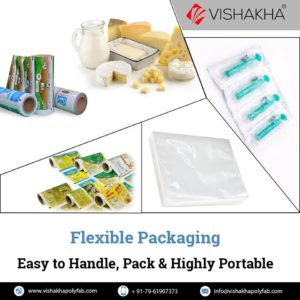Packaging Restrictions and Strategies Followed in Different Types of Food Industries
Wrapping or packing food items has a big role to play. Not all the food items can be covered by a single method. Food products that are liquid in state, processed foods, dairy products, vegetables and other fresh foods, etc have to be packed with relevant wrapping requirements as the products should stay in good condition until the user unfolds the packing. In addition, the aspect of covering has risks from external factors like atmosphere, climate, transportation inconveniences, etc. Hence, food industries always maintain certain important restrictions and strategies which packing different types of food products. According to the Food Safety and Standards Authority Act 2006 of India, food manufacturing, processing, packaging and distribution to markets should satisfy the requirements for safety. Pertaining to the rules several food industries follow certain important strategies such as,
-
Selection of packaging material with respect to the property of the food product. For example, beverages, fresh foods, dairy products , etc need different packaging requirements
-
Making sure that the wrapping material does not get influenced by the external factors such as climate, or temperature
-
Preferring to choose moisture free wrapping materials to maintain the quality of foods, etc
Wrapping Requirements for Solid and Liquid Food Varieties
Wrapping process in food industries differ widely for different types of food items. Liquid items such as fruit juices and other consumable drinks have to be packed with high barrier lamination based multi layered films and bulk solid food items like meat, cheese, dried foods and bakery products should be packed with 9, 7 or 5 layered v Thermo films. In addition dairy products such as chocolates, sweets, ready meals can be packed with top lidding PE EVOH based films or PP, PS, PET, Aluminium films and so on. Food items such as processed dairy products, meat, fish, marine and frozen foods, vegetables such as potato, peas, dried fruits, etc which have to be distributed to provisional stores can be packed with PE EVOH based vacuum pouches. These packaging products give the food materials protection from moisture and oxygen. In addition, packaging films need to be made of quality material and processed according to the wrapping requirement and food properties. For example, co-extruder lamination films that are produced with multi-layers are applied for sealing different types of packaging demands. Hence, manufacturers focus on offering flexible packaging films with which industries can obtain safety of food products at a reasonable cost.
To know more about flexible packaging film, kindly visit – www.vishakhapolyfab.com

Fresh Food wrapping is an Ultimate Activity that Requires Mandatory Commitments
To sustain the freshness of the food products, packaging options are chosen by the food industries in terms of selecting the barrier films. High Barrier film is a wrapping texture that is formed with the combination of gas-flushing and vacuum technology and this material is preferred for protecting the integrity and shelf-life of the food item. Bulk bag liner is applied to seal the containers where large or bulk quantity of food items will have to be stored. Moreover, storing fresh foods require mandatory commitment in terms of selection of the packaging film in accordance with the type of food and its properties.
Conclusion
Packaging of perishable food products remains a major and challenging task in the food industries. Food items such as meat, ripe fruits, sea food and canned foods need to be packed with advisory notes as they cannot be stored more than a short period of time. Flow pack films will stay the right option for storing perishable food varieties. Hence, every packaging film type is selected based on the type of food product as the wrapping has more significance in protecting the quality of the food products inside.
